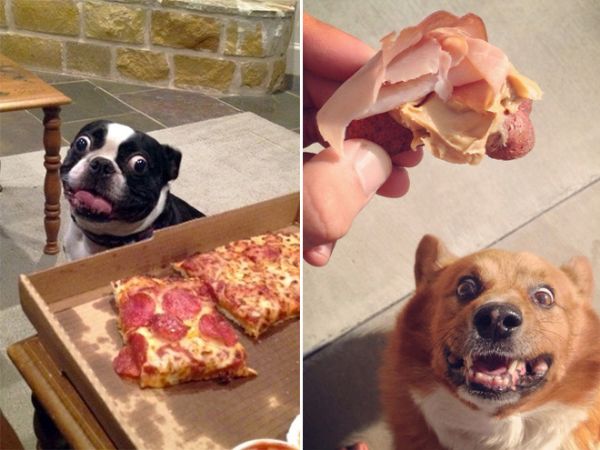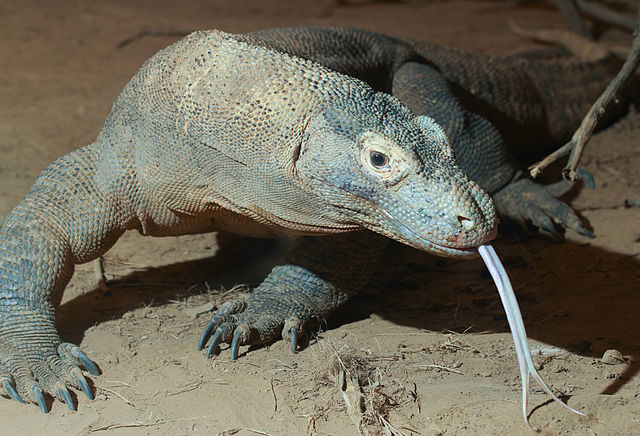Скольким из вас, владельцев собак, приходится регулярно сталкиваться с мучениями, когда пара слезящихся глаз умоляет вас о куске еды, так красиво выставленной на вашей тарелке? Я знаю, что. Это потому, что собаки — одни из самых больших гурманов животного мира. В отличие от других представителей своего вида, они уже давно преодолели стадию кормления ради выживания, а еда превратилась в лакомство, приятно щекочущее их вкусовые рецепторы. Еще одна вещь, которая изменилась, — это их статус хищников. Это правда, что раньше это действительно было их природой, и волки (например) были живым доказательством этого. Но поскольку людям удалось их приручить и взять с собой в качестве верных товарищей, в наши дни их можно смело считать всеядными. Однако на самом деле они не могут есть все, что им нравится, и есть несколько фактов о собаках и еде, которые вам нужно знать.

Во введении к статье я говорил о природе собак как хищников. Хотя это правда, что вы определенно можете добавлять в рацион своей собаки многие ингредиенты, которые потребляют даже травоядные животные, они генетически созданы для того, чтобы быть любителями мяса. Их когти и клыки с выступающими клыками не только предназначены для того, чтобы они идеально подходили для охоты на добычу, но и уберечь собаку от сырого мяса — сложная задача. Шансы, что он откажется от приготовленной мясной еды, невелики или вообще отсутствуют, но если вы действительно хотите, чтобы он заработал, просто поднесите его к сырой куриной грудке или органу животного. Несмотря на это, не рекомендуется кормить собаку сырым мясом, поскольку она может переносить множество потенциально опасных заболеваний, которые можно частично искоренить при контакте с высокими температурами.

Это может показаться неожиданностью, но если бы собака могла открыть и украсть банку с печеньем, она почти наверняка так и сделала бы. Собаки могут ощущать различные вкусы, наиболее выделяющимся из которых является сладость. Их двоюродные братья, живущие в дикой природе, на самом деле часто потребляют ягоды и другие фрукты, богатые фруктозой (хорошо известный заменитель сахара даже в рационе человека), чтобы дать им ежедневную дозу глюкозы, необходимую для повышения энергии. Можно увидеть, как ваша собака пускает слюни на ваш праздничный торт, но определенно не рекомендуется потакать ее прихотям, поскольку сахар может оказаться опасным для ее здоровья.

Как будто необходимости удерживать собаку от поедания всей ее еды было недостаточно, вы должны знать, что вам также нужно следить за миской с едой вашей кошки. Собаки, особенно большие обжоры, могут вторгнуться в еду вашего котенка, если им представится такая возможность. Это потому, что эти два вида еды, очевидно, не так уж и отличаются, и наши четвероногие приятели редко отказываются от возможности удовлетворить свое любопытство и попробовать новый, своеобразный вид блюда. Но даже несмотря на то, что от того, что собака переваривает некоторые кошачьи деликатесы, ничего страшного не произойдет, вы должны убедиться, что это не повторится. Кошкам и собакам требуются разные продукты из рациона, чтобы вести здоровый и сбалансированный образ жизни, поэтому корм для кошек содержит некоторые элементы и питательные вещества, которые собакам действительно не нужны, например таурин. Лучше всего держать своих питомцев каждый в своей миске, если вы хотите, чтобы они были максимально счастливы в долгосрочной перспективе.

Несмотря на то, что собаки очень хотят иметь возможность попробовать все виды вкусных харчей, которые может предложить мир, есть некоторые вещи, которые вы никогда не должны их кормить, поскольку они представляют собой реальную угрозу для его благополучия. Некоторые из них кажутся даже до странности банальными, но они могут оказаться губительными для вашей собаки. Пожалуй, самыми удивительными примерами являются виноград и, соответственно, изюм. Не многие об этом знают, но в винограде содержится вещество, которое может привести к почечной и печеночной недостаточности. Более того, было много случаев, когда собаки умирали, переварив всего лишь горстку винограда, поэтому любой ценой избегайте скармливания их своей собаке. Другим примером является продукт, который, хотя и чрезвычайно распространен в пище человека, чрезвычайно токсичен как для собак, так и для кошек и фактически является одним из самых вредных: лук. При употреблении собаками различные ядовитые вещества, которые они выделяют, могут привести к разрушению эритроцитов и, в конечном итоге, к анемии.
Другие токсичные продукты, которых категорически нельзя кормить собаку, включают: шоколад, персики, сливы, лосось, форель, семена яблок и кофе.

Список продуктов, которые на удивление вредны для собак, может быть весьма внушительным, но не волнуйтесь – не все, что мы едим, представляет опасность для наших питомцев. Есть некоторые болезни, которым разрешен зеленый свет, а некоторые из них даже являются полезным дополнением к их рациону. Одним из самых удивительных примеров является чеснок, который, в отличие от лука, может даже улучшить здоровье вашей собаки. Единственное условие для этого – контролируемое потребление, поэтому обязательно добавляйте его в очень малых дозах. Сырые яйца – тоже странный выбор. Очевидно, что приготовленные яйца тоже учитываются, но хотя наибольшую угрозу сырые яйца представляют собой сальмонеллы, они превосходно обеспечивают вашего щенка необходимыми ферментами, белками и витаминами для улучшения его жизни.
Помимо этого, вы также можете кормить собаку фруктами, овощами, рисом, макаронами, печеным картофелем и нежирным мясом.
В заключение, ясно, что кормление вашей собаки предполагает гораздо больше, чем просто снятие кожицы с куриной ножки с кости и бросание кусочков в миску вашей собаки. У них невероятный аппетит, который иногда даже выходит из-под контроля. Но, к счастью (или нет, я думаю, это зависит от точки зрения), именно нам полезно иметь сознание, поэтому мы должны быть уверены, что не даем собаке все, что она хочет съесть. Благодаря этим 5 фактам о собаках и еде, которые вам нужно знать , теперь вы знаете, что лучше не делать этого.




